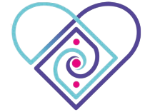Knee pain is very common, both from sport injuries and the wear and tear of day-to-day life. Knee joints serve a vital role in supporting your bodyweight and are put through added pressure when you walk, run or jump. Injuries include sprains, swollen or torn ligaments, damaged cartilage, and runner’s knee. Sports injuries tend to affect one knee; pain in both knees is more common with arthritis. Risk is increased as you get older, from being overweight and from high impact sports.
Anatomy: The knee is one of the largest and most complex joints in the body. It joins the thigh bone (femur) to the shin bone (tibia), with a smaller bone running along the lateral (outside) of the tibia (the fibula) and the kneecap (patella) at the front. The thigh muscles that move the knee joint attach to the bones by tendons. Ligaments attach bones together, providing stability to the knee. The cruciate (cross) ligaments in the centre of the joint: anterior prevents the tibia sliding forwards on the femur; posterior prevents the tibia sliding backwards on the femur. The collateral ligaments on the outer (lateral) and inner (medial) sides of the joint prevent sideways movement of the joint. C-shaped menisci (cartilage) medial and lateral form shock absorption between tibia and femur. Bursae, fluid filled sacs help the knee move smoothly.
Symptoms: Common symptoms include pain, tenderness, discomfort and stiffness in the knee with limited mobility; also swelling, redness and muscle spasms. You will need to see your doctor if you cannot weight bear on your knee, you have severe pain when not weight bearing, especially at night; your knee locks or clicks painfully, keeps giving way, looks deformed, you cannot fully straighten or bend it; you have pain, swelling, numbness or tingling in the calf of the affected knee; you have fever, redness or heat around the knee or it is very swollen; the pain hasn’t improved in a few weeks or is still severe after a few days of home care.
Causes: Common causes from overuse or injury are: sprains and strains, tendonitis, bursitis (housemaid’s knee), anterior knee pain around the kneecap, Osgood-Schlatter disease in teenagers, iliotibial band (hip to knee) syndrome, medial plica syndrome affecting a fold of tissue in the knee joint, broken fragments of bone or cartilage in the joint, torn ligaments or tendons, bleeding in the joint. Cartilage damage from wear and tear or acute injury, partially dislocated kneecap (patellar) and diseases like gout, septic arthritis and osteoarthritis.
Diagnosis: The doctor will examine the movement of your knee and may arrange extra tests such as X-ray, MRI or blood tests.
Treatment: Depends on the severity and type of injury. Many injuries can be treated at home or get better with time. Avoid stressing the joint, use ice packs and elevate the leg. Painkillers or anti-inflammatories may be advised as well as physical therapy or arthroscopy, keyhole surgery to look inside the joint to assess and repair any damage. More serious injuries may require further surgery.
Prevention: Stretching, warming up and cooling down for sports and workouts; wearing the right equipment such as good trainers for running, knee pads for kneeling. Be prepared for your sport with good training. Attend to minor injuries before they become major. Listen to your body!
Osteopathic/Manual Management: Take a detailed case history to understand the nature of the problem and surrounding issues. Examine the knee, thigh and calf and all surrounding tissues; muscles, ligaments, nerves, fascia, etc., for movement, strength and functionality and assess motor nerve pathways. Consider the effect of the injury/condition on the whole body. Perform orthopaedic and neurological tests. Treat to reduce muscle tension and pain and improve joint alignment. Advice regarding specific strengthening and stretching exercises. Treatment may include manipulation, deep soft tissue massage, trigger point therapy, muscle energy techniques, fascial techniques, dry needling, etc.
We are happy to advise you on your health matters and offer a free 15 minute joint and spinal check, without obligation.
Lin Bridgeford DO KFRP MICAK MICRA FSCCO MSc
Registered Osteopath & Kinesiologist & Yoga Teacher
Aether Bios Clinic
Saltdean
01273 309557
07710 227038
